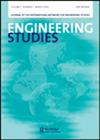Engineering Readiness: How the TRL Figure of Merit Coordinates Technology Development
IF 1.3
3区 工程技术
Q2 EDUCATION, SCIENTIFIC DISCIPLINES
引用次数: 4
Abstract
ABSTRACT This paper demonstrates the coordinating roles played by decision-making concepts such as Technology Readiness Level (TRL) in industrial engineering practice, where technology development is increasingly complex, involving diverse stakeholders, engineering tools and sociotechnical objects. Such distributed practices demand coordinated efforts across specialized units with diverging interests and perspectives on how development is being defined and accounted for. Nonetheless, coordinating roles of decision-making concepts in industry have largely escaped the recent attention of scholars within engineering studies and Science and Technology Studies. This paper offers an auto-ethnographic study of how the TRL figure of merit was deployed in an industrial organization. We ask how TRL is made to perform as an effective coordinating device. Following the TRL device across project meetings, we consider the three moments of a calculative device as defined by Michel Callon and Fabian Muniesa, to illuminate how TRL serves to circumscribe, configure and coordinate encounters and activity in a technology development project, as managed by the corresponding author. Contrary to linear and mechanistic understandings within management thinking, we show TRL is more than a figure of merit for measuring progress. In the hands of skilled practitioners, TRL also performs as a centralized calculating device to orchestrate distributed activities.工程准备:TRL优点图如何协调技术开发
摘要本文论证了技术准备水平(TRL)等决策概念在工业工程实践中所起的协调作用,在工业工程实践中,技术开发日益复杂,涉及各种利益相关者、工程工具和社会技术对象。这样的分布式实践需要跨专门单位的协调努力,这些单位对如何定义和解释开发具有不同的兴趣和观点。尽管如此,决策概念在工业中的协调作用在很大程度上没有引起工程研究和科学技术研究学者的注意。本文提供了一个自动人种志研究如何TRL的数字功绩部署在一个产业组织。我们询问如何使TRL作为一个有效的协调装置发挥作用。随着TRL设备跨越项目会议,我们考虑了Michel Callon和Fabian Muniesa定义的计算设备的三个时刻,以阐明TRL如何在技术开发项目中限制、配置和协调遇到和活动,由通讯作者管理。与管理思维中的线性和机械理解相反,我们表明TRL不仅仅是衡量进步的一个指标。在熟练的从业者手中,TRL还可以作为一个集中的计算设备来编排分布式活动。
本文章由计算机程序翻译,如有差异,请以英文原文为准。
求助全文
约1分钟内获得全文
求助全文
来源期刊

Engineering Studies
ENGINEERING, MULTIDISCIPLINARY-HISTORY & PHILOSOPHY OF SCIENCE
CiteScore
3.60
自引率
17.60%
发文量
12
审稿时长
>12 weeks
期刊介绍:
Engineering Studies is an interdisciplinary, international journal devoted to the scholarly study of engineers and engineering. Its mission is threefold:
1. to advance critical analysis in historical, social, cultural, political, philosophical, rhetorical, and organizational studies of engineers and engineering;
2. to help build and serve diverse communities of researchers interested in engineering studies;
3. to link scholarly work in engineering studies with broader discussions and debates about engineering education, research, practice, policy, and representation.
The editors of Engineering Studies are interested in papers that consider the following questions:
• How does this paper enhance critical understanding of engineers or engineering?
• What are the relationships among the technical and nontechnical dimensions of engineering practices, and how do these relationships change over time and from place to place?
 求助内容:
求助内容: 应助结果提醒方式:
应助结果提醒方式:


